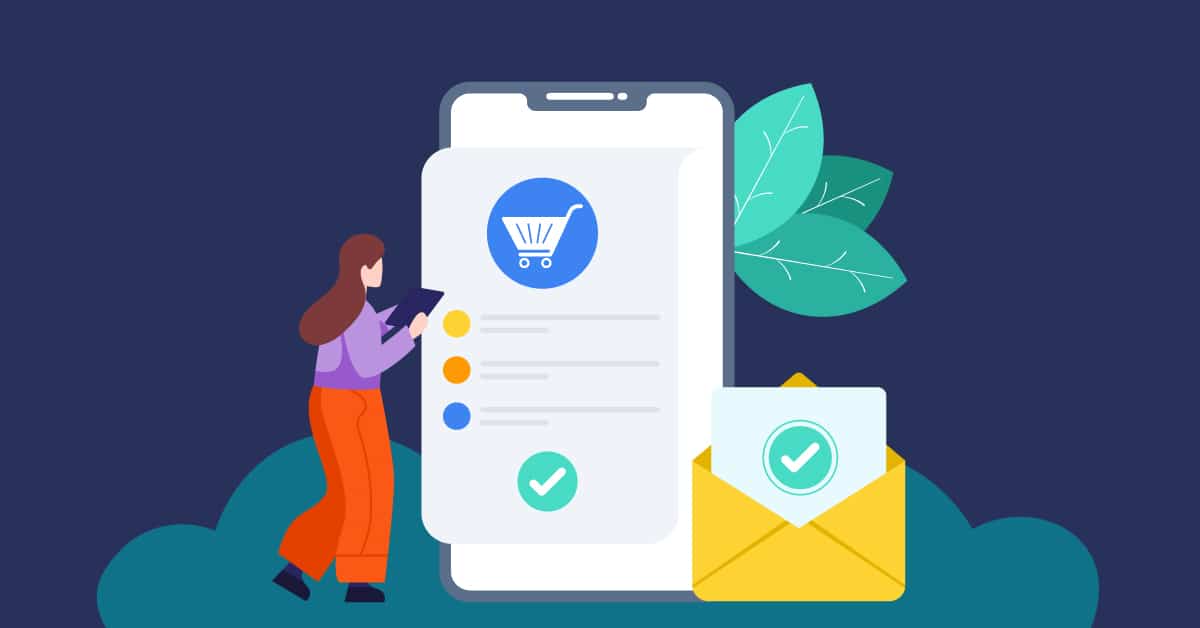What differentiates a thriving ecommerce company from one that’s only treading water?
Advertising, content, and other inbound efforts help, but the real secret lies in nurturing leads and building brand loyalty after the first sale is made.
While it may be tempting to rest on one’s laurels after the initial sale, doing so ignores the incredible opportunity to create a lifelong relationship with a new customer.
So what’s the best way to benefit from that post-purchase excitement? Take advantage of the very next touchpoint: the order confirmation email.
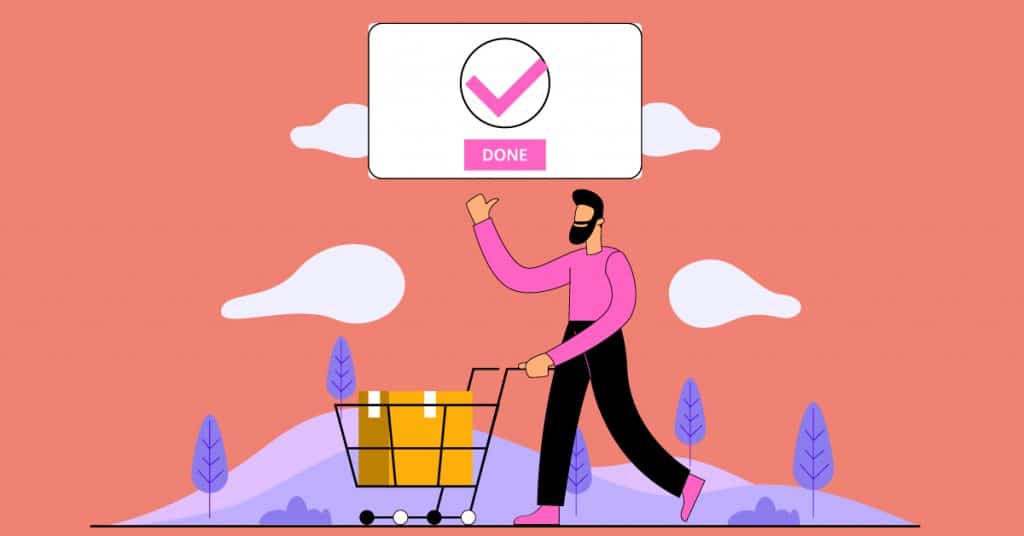
Order confirmation emails, like most transactional emails, are too often ignored from a marketing perspective.
Transactional emails are an extremely important component of lifecycle and email marketing campaigns. Since they have the highest open rates out of any type of email, savvy marketers know that this is a great opportunity to upsell and cross-sell related products while building a report with the customer.
So now that you know that your confirmation email is important and has powerful potential, what do you need to create a successful one? Here are 7 best practices and order confirmation email examples to help you design your post-checkout masterpiece.
Don’t Leave Out Important Information.
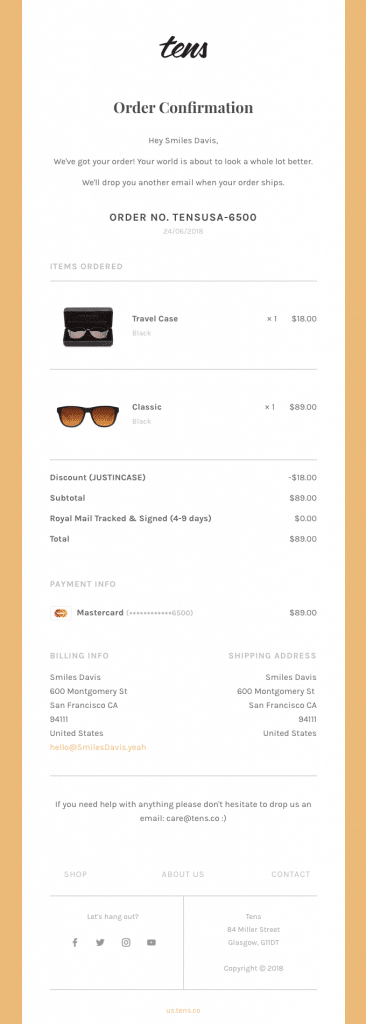
Just like stocking your ecommerce store shelves, remember it needs to be about what your customer will be looking for, not necessarily what you’d look for as the business owner.
While it may seem a relatively simple consideration, many businesses forget that their customers don’t have access to their databases and cross-searching capabilities. While, for example, you may be able to pull up the order history off of a customer name alone, they’ll want more points of information to build trust. At a minimum, your order confirmation email should contain:
- Order summary with the full name of the item(s) purchased.
- A thumbnail image of the product, preferably linked to your site.
- The customer’s name.
- Billing address.
- Shipping address.
- The date the purchase was made.
- The order number.
- The method of payment (e.g. the last 4 numbers of the payment card being used.)
- The full amount of the purchase, with line items for each product, tax, shipping and discounts.
If applicable, also include:
- Their customer ID.
- Shipping method.
- Hyperlink to shipment tracking page.
Assume They’ve Still Been Bitten By The Shopping Bug

Sure, they just purchased something from your store, but that doesn’t necessarily mean they’ve “scratched that itch.” If they’ve bought item X, they’re already halfway down the road to buying accessory Y.
Strike while the iron is hot by suggesting related items (or items you know they looked at already) at bottom of your confirmation email, along with the suggestion and ability to add them to the just-placed order for a specific amount of time. This “ticking clock” urgency can help boost order totals and sell-through, even on orders that are already a sure thing.
Don’t Skimp On Interesting Visuals
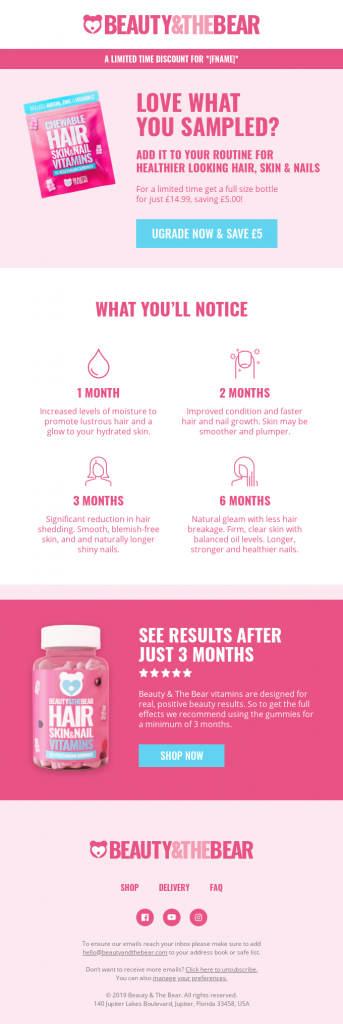
Text-only? Yawn. While you don’t need to go full-page ad on your customers, it doesn’t mean you shouldn’t appeal to their eyes while you’re delivering important info. Even if your company is more about understated neutrals, a nice background and some lay-flat product shots in your header can go a long way to capturing attention.
Don’t overdo it, but make sure at least one or two images make it in. If you’re more in the service line of ecommerce, a nice “after” shot of your work, or some sort of infographic can do the trick.
Give Your Customers a Reason to Continue Shopping
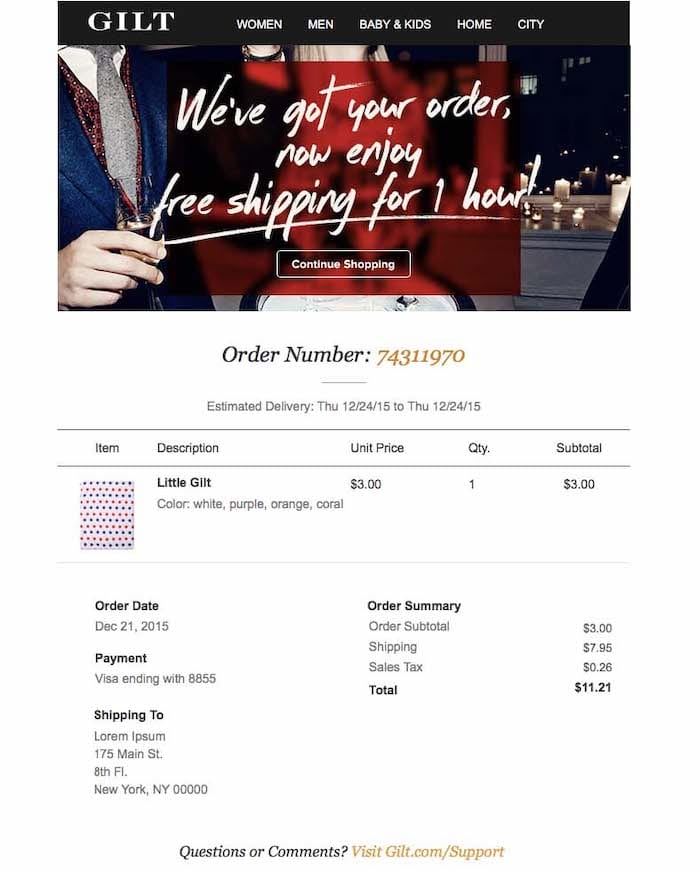
Present a discount or offer to incentive the customer to keep shopping. This can be as simple as offering free shipping on their next order or 10% off.
Discounts are a tried and true email marketing tactic. Why not use it on one of your most opened emails?
Stay True To Your Brand Roots

In addition to following graphic consistency that mirrors your site – established hex colors, logo format, text font, sizing, and so on – it’s important to keep your brand voice in line with the shopping experience.
Sure, you may have an excellent pun lined up for your subject line, but ask yourself: does it match? Just as large, established brands will seldom leap into a dramatic shift in messaging in television or print ads, it’s important that your customer is presented with an easily recognizable image of who you are and what you do for them.
Make Sure Your Confirmation Email Is Readable

Mobile content rules the roost in terms of ecomm marketing. That said, your emails should be easy to read on all devices. No one wants to squint and scroll left to right on a phone screen, or navigate an artificially truncated width on a “skinny” desktop email.
Make sure you include an option to view your order confirmation email outside of the inbox – a “view this email in browser” link works well, as does a “view this email in mobile format / desktop format” link near the top of your email, if not in the header.
Preemptively Answer Questions and Offer Contact Options
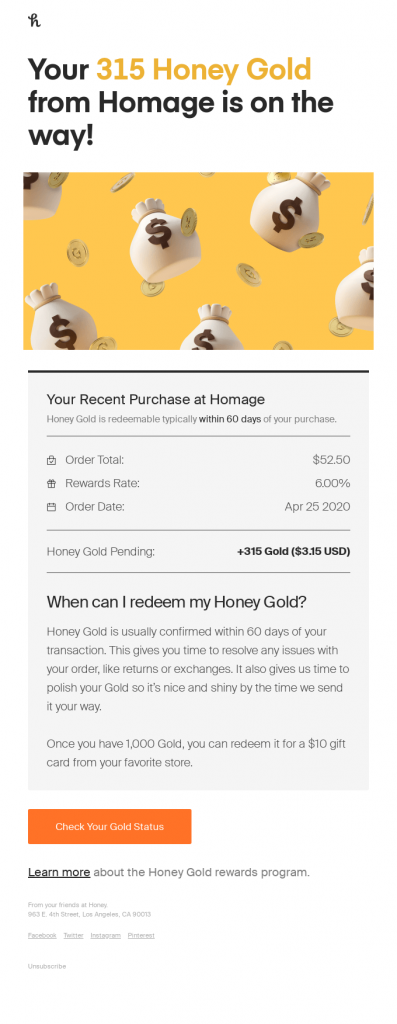
A customer uncertain about their order is a customer that’s going to soak up working hours through your customer service department. While you won’t want to include the entirety of your FAQs in every order confirmation email, it’s prudent to answer a few more common questions and link out to your more in-depth FAQs on your site.
This technique also offers a valuable opportunity to steer customers in need of assistance to a method that best suits your brand.
Include a contact email, phone number, and links to helpful FAQs. At worst, you’ll save time on transferring customers with issues, and at best they’ll answer questions themselves.
Incorporating these 7 simple yet effective order confirmation email examples will help you reduce friction and maximize your customer lifetime value.
As long as you treat sales as the beginning of your customer connections, rather than the end goal, you’ll reap the benefits. A well-structured post-sale template is your ultimate tool for building solid trust and brand loyalty, one carefully crafted confirmation email at a time.
